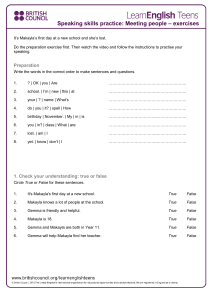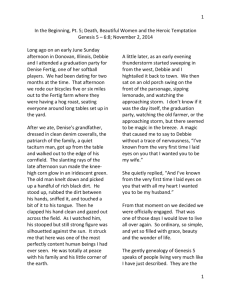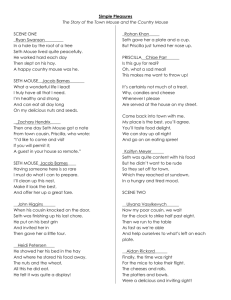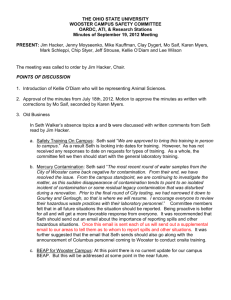Reasoning in Research
advertisement
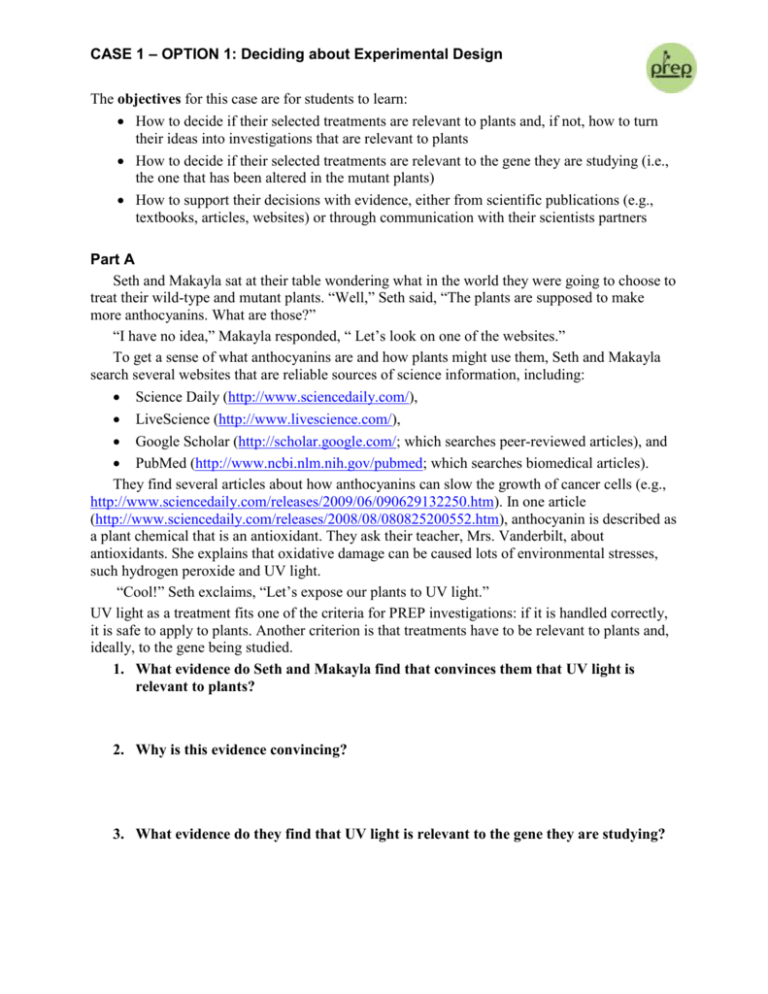
CASE 1 – OPTION 1: Deciding about Experimental Design The objectives for this case are for students to learn: How to decide if their selected treatments are relevant to plants and, if not, how to turn their ideas into investigations that are relevant to plants How to decide if their selected treatments are relevant to the gene they are studying (i.e., the one that has been altered in the mutant plants) How to support their decisions with evidence, either from scientific publications (e.g., textbooks, articles, websites) or through communication with their scientists partners Part A Seth and Makayla sat at their table wondering what in the world they were going to choose to treat their wild-type and mutant plants. “Well,” Seth said, “The plants are supposed to make more anthocyanins. What are those?” “I have no idea,” Makayla responded, “ Let’s look on one of the websites.” To get a sense of what anthocyanins are and how plants might use them, Seth and Makayla search several websites that are reliable sources of science information, including: Science Daily (http://www.sciencedaily.com/), LiveScience (http://www.livescience.com/), Google Scholar (http://scholar.google.com/; which searches peer-reviewed articles), and PubMed (http://www.ncbi.nlm.nih.gov/pubmed; which searches biomedical articles). They find several articles about how anthocyanins can slow the growth of cancer cells (e.g., http://www.sciencedaily.com/releases/2009/06/090629132250.htm). In one article (http://www.sciencedaily.com/releases/2008/08/080825200552.htm), anthocyanin is described as a plant chemical that is an antioxidant. They ask their teacher, Mrs. Vanderbilt, about antioxidants. She explains that oxidative damage can be caused lots of environmental stresses, such hydrogen peroxide and UV light. “Cool!” Seth exclaims, “Let’s expose our plants to UV light.” UV light as a treatment fits one of the criteria for PREP investigations: if it is handled correctly, it is safe to apply to plants. Another criterion is that treatments have to be relevant to plants and, ideally, to the gene being studied. 1. What evidence do Seth and Makayla find that convinces them that UV light is relevant to plants? 2. Why is this evidence convincing? 3. What evidence do they find that UV light is relevant to the gene they are studying? CASE 1 – OPTION 1: Deciding about Experimental Design 4. Why is this evidence convincing? 5. What could Seth and Makayla do to study how their wild-type versus mutant plants respond to changes in UV light in their environment? 6. How should they treat their plants and why? Part B Seth and Makayla ask Mrs. Vanderbilt whether the school has any UV lights. Mrs. Vanderbilt thinks for a minute, “Well, we have some handheld blacklights and a biosafety cabinet that has a germicidal lamp. See if you can find any information about the difference between those two UV light sources and which might be most relevant to plants.” Seth and Makayla search Wikipedia for information about UV light, and find there are several types with different wavelengths. Blacklights are UVA (400-315 nm) and germicidal lights are UVC (280-100 nm; http://en.wikipedia.org/wiki/Ultraviolet). “I think we should use the germicidal lamp, since people play with blacklights all of the time and they don’t do anything,” Makayla explains. They also email their scientist partner, Dr. Roberts, for advice. Dr. Roberts responds, “Great idea to use UV light. The mutants you are studying have a gene that is not working – this gene may be important in the plant’s ability to absorb UV light or respond to the damage it causes in its environment. If you treat your experimental plants with UV light, you may find that the mutant and wild type grow differently.” Dr. Roberts finds several articles that she shares with Seth and Makayla; in these articles, other plant scientists have used UVC light as a source of oxidative stress (e.g., http://www.jbc.org/content/283/2/774.long; http://www3.interscience.wiley.com/cgibin/fulltext/118793857/HTMLSTART). The students decide to expose their plants to the germicidal lamp. They keep their control plants in regular light, which is also called white light. 1. Now that they have decided on their treatment, how could Seth and Makayla examine the effects of the treatment on the plant? 2. What should they observe or measure and why?
